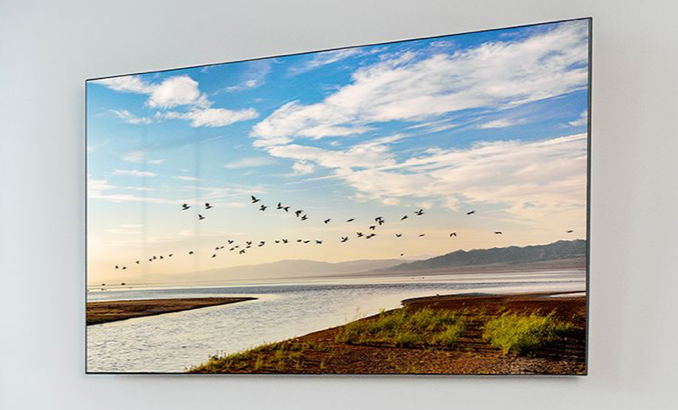Corning Unveils Astra Glass for 8K Monitors
by Anton Shilov on May 15, 2019 4:00 PM EST
Corning has introduced its new glass substrate that was developed specially for mid-to-large-size displays featuring a high pixel density. Corning’s Astra Glass takes into account not only high resolutions, but also process technologies used to make displays featuring high refresh rates, deep colors, and other attributes of next-generation desktop and mobile monitors.
Display cover glasses serve numerous purposes. Apart from protecting the screens themselves, their surfaces also affect their reflectivity, brightness, and accuracy of their color reproduction (as to some degree even work as color filters). Since all materials have a different crystal lattice, their physical properties (transparency, reflectivity, etc.) vary greatly. Considering the fact that screen technologies evolve, so should their cover glasses.
Corning believes that next generations of mid-to-large-size monitors that feature resolutions like 8K (7680×4320) will require a thermally and dimensionally stable glass that can enable desired characteristics and ensure good yields. This is where Corning’s Astra Glass comes into play. It is compatible with a variety of high-performance LCD panels, including amorphous silicon (a-Si) and IGZO oxide.
“After years of close collaboration with customers, we’ve learned what they need in an oxide display glass to bring 8K resolution to larger devices and sets – low total pitch variation, low total thickness variation, and low sag,” said Han Yim, business director, High-Performance Displays, Corning Glass Technologies. “Astra Glass meets the precise, high-temperature requirements of oxide processing.”
Corning expects its Astra Glass to be used for tablets, laptops, desktop displays, TVs, and other applications with an 8K resolution screens. The company will demonstrate prototypes of devices using its Astra Glass at the Society for Information Display’s (SID) Display Week in San Jose, California, this week.
Related Reading:
- Corning Unveils Gorilla Glass DX and Gorilla Glass DX+ for Wearables
- Corning Announces Gorilla Glass 6 for Smartphones, Doubles Durability
- Sharp Demonstrates 31.5-Inch 8K 120Hz HDR Monitor
- New 8K OLED Displays for Tablets and Laptops: 8.3 and 13.3 Inches
- Philips Demos 328P8K: 8K UHD LCD with Webcam, Docking, Coming in 2018
Source: Corning










27 Comments
View All Comments
willis936 - Wednesday, May 15, 2019 - link
Maybe it’s Iridium Gallium Zinc Dioxide.ingwe - Wednesday, May 15, 2019 - link
It is Indium and not Iridium. Which is good because there is even less Iridium available than Indium.sorten - Thursday, May 16, 2019 - link
I still haven't moved to 2.5Kmelgross - Thursday, May 16, 2019 - link
This is just another way for Corning to sell product. 8K has nothing to do with any of this. There’s nothing so different about the way 8K displays are manufactured that requires special glass, and Apple has been using IGZO screens for years for iPads, and even phones. I believe they use them for other machines as well. Larger screens aren’t made any differently. They just aren’t cut down as much to smaller sizes.Don’t believe the hype.
Skeptical123 - Thursday, May 16, 2019 - link
Smart move by Corning to expand it business.A-Tech-fan-55 - Friday, May 17, 2019 - link
"Since all materials have a different crystal lattice"This is false. Many materials share the same crystal lattice. For example, Sodium Chloride, Magnesium Oxide, and tons of other materials have the face-centered-cubic lattice.
urbanman2004 - Friday, June 28, 2019 - link
I didn't realize how versatile Corning was until I watched this mini documentary https://www.youtube.com/watch?v=lopwv2ViNMw&t=...